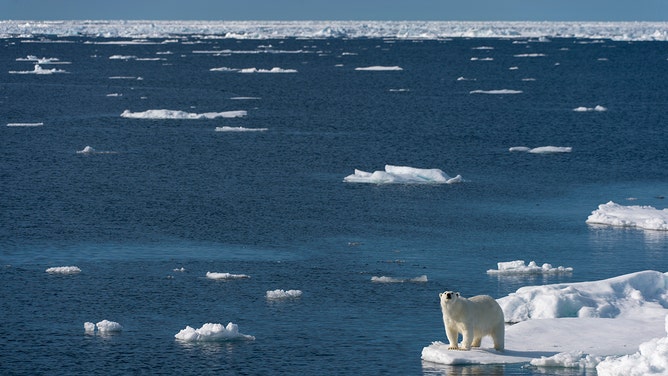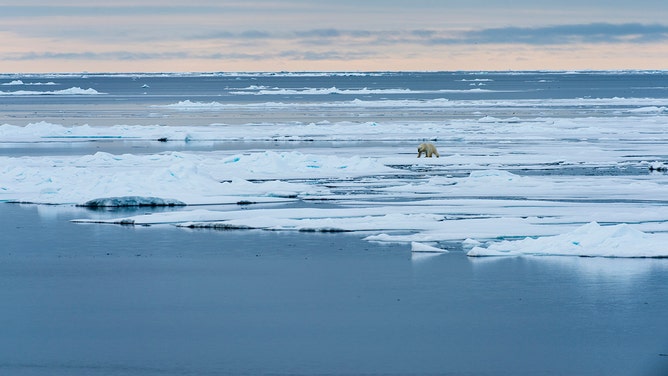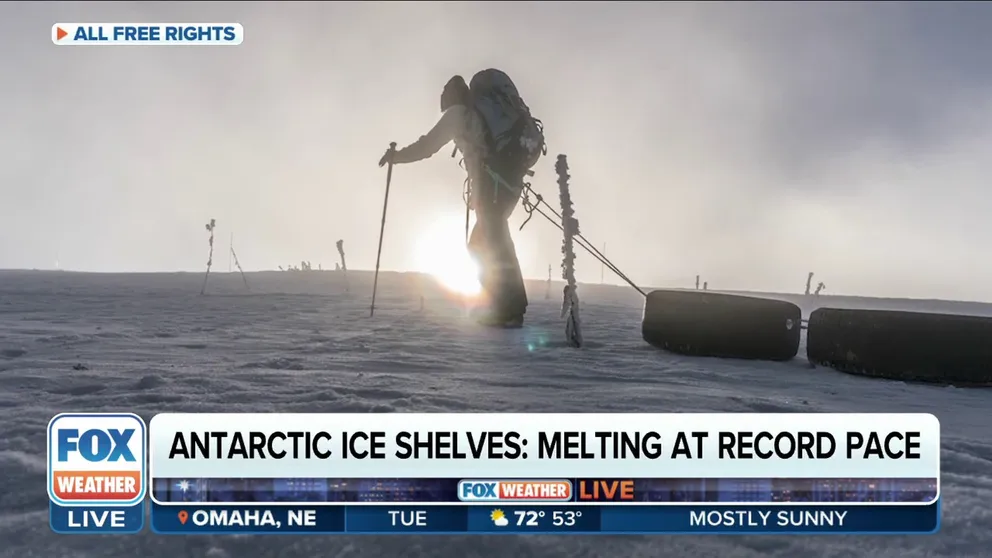Arctic Ocean could become 'ice-free' within a decade, researchers say
The amount of Arctic sea ice has "declined conspicuously" since 1978, according to satellite observations. The decline is noticeable in all seasons, but it is most significant during the summer.
FILE – Antarctica's ice shelf melting faster than expected
Glaciologist Dr. Heidi Sevestre joins FOX Weather from Austria to talk about how Antarctic ice shelves are melting at a record pace.
The Arctic Ocean may be ice-free within ten years, according to researchers.
A new study from the University of Colorado, Boulder, published in Nature Reviews Earth and Environment on Tuesday, made the terrifying prediction.
"Climate model projections show that first ice-free conditions will occur by mid-century and could occur within the 2020s and 2030s under the right atmospheric and oceanic conditions," Alexandra Jahn, the study’s lead author, told FOX Weather.
She added that consistently ice-free September periods are anticipated by mid-century.
Jahn, who is an associate professor of atmospheric and oceanic sciences and fellow at CU Boulder’s Institute of Arctic and Alpine Research, said she concluded after analyzing existing literature on sea ice projections.
EARTH SETS HEAT RECORDS FOR 9 STRAIGHT MONTHS AS FEBRUARY 2024 GOES DOWN AS PLANET’S HOTTEST

A polar bear is walking over the pack ice north of Svalbard, Norway, on July 20, 2015.
(Wolfgang Kaehler/LightRocket / Getty Images)
To evaluate how the Arctic might change daily in the future, Jahn and her team also analyzed data on sea ice coverage from computational climate models.
The amount of Arctic sea ice has "declined conspicuously" since 1978, according to satellite observations. The decline is noticeable in all seasons, but it is most significant during the summer.
According to the study, the sea ice area has decreased by 0.078 million square kilometers (30,116 square miles) per year since 1979. The study defines "ice-free" as when the Arctic Ocean has a sea ice area of less than 400,000 square miles.
ANTARCTIC SEA ICE EXTENT TIES FOR SECOND LOWEST ON RECORD
"The first time we’ll see ice-free conditions in the Arctic will be in the daily sea ice satellite data, which will occur on average 4 years earlier than in the monthly mean," Jahn adds.
Future emission choices will determine how often and for how many months a year the Arctic will be ice-free after reaching first ice-free conditions, she adds. For example, the Arctic has the potential to be ice free from May through January by 2100 under high carbon dioxide emission scenarios.
"Hence, the more we can reduce greenhouse gas emissions, the shorter the ice-free season will be," Jahn said.
The study suggests that melting ice in the Arctic can have far-reaching consequences for the environment and its inhabitants. Rising sea levels and larger waves can harm both land and wildlife. Ice loss may also threaten the survival of certain animals, such as polar bears and seals. As the ice recedes, human activities such as shipping and oil exploration may increase in the region.
POLAR BEARS NOT LIKELY TO MAKE IT THROUGH LONGER SUMMERS, RESEARCH FINDS

A polar bear is walking over the pack ice north of Svalbard, Norway, on July 20, 2015.
(Wolfgang Kaehler/LightRocket / Getty Images)
The Arctic is expected to become ice-free by 2050, regardless of emissions scenarios, and it may happen even sooner with specific atmospheric and oceanic conditions.
"So it is going to happen within many of our lifetimes," Jahn notes.
However, Arctic sea ice has the ability to recover swiftly if the atmosphere cools down to levels that previously supported summer sea ice.
"Unlike the ice sheet in Greenland that took thousands of years to build, even if we melt all the Arctic sea ice, if we can then figure out how to take CO2 back out of the atmosphere in the future to reverse warming, sea ice will come back within a decade, once temperatures are low enough to support sea ice," Jahn said. "However, the impacts of prolonged ice-free periods, such as loss of species or coastal erosion, can not be reversed, so it is best not to lose sea ice for long periods of time in the first place."
The Arctic Ocean is the world's smallest and shallowest of the five major oceans. It is recognized for its frigid waters, making it one of the coldest of oceans.
